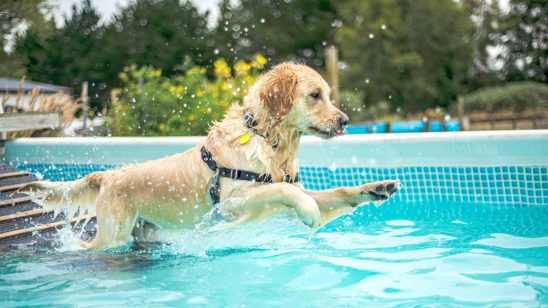
Over-exercising dogs
The health issues that come along with under-exercising your dog are well-known, the detrimental outcomes of over-exercising are less known.
It’s important to know the signs of over-exercising, the ways you are exercising your dog, and what the weather conditions are to make sure you keep your pet happy and comfortable all
summer long.
SIGNS
Dogs are not able to tell us when they are in pain or uncomfortable, yet there are a few signs we can look out for to tell if we are over-exercising them.
Signs include if they are resistant to exercise, appear anxious, pant continuously, have visible joint pain, and wear and tear on paw pads.
EXERCISE TOOLS
A current hot topic for debate is the popular ball flinger, a plastic tool that launches a tennis ball far into the distance for your dog run after and fetch.
Some vets are voicing their concerns about the effects of continual running on dogs’ joints, muscles, and cartilage, saying it can lead to long-term issues such as arthritis.
A ball flinger may be the current choice for dog owners, but trends come and go. Frisbees or sticks will keep your dog just as happy and fit
Whatever you do use to exercise your dog, remember moderation.
HEAT
Keep in mind, too, that as the temperatures rise, dogs can become overheated or fatigued. When it’s hot, walking on sand or pavement can burn your dog’s paw pads. Bypass these issues in summer by avoiding the hottest mid-periods of the day and instead opt for morning or evening strolls and play. While all these tips are important, the number one thing to remember is to be truly kind. When out with your dog consider if you would get tired running for that long, or is it too hot for you to exercise?
Imagine yourself in a coat, how would you feel?



